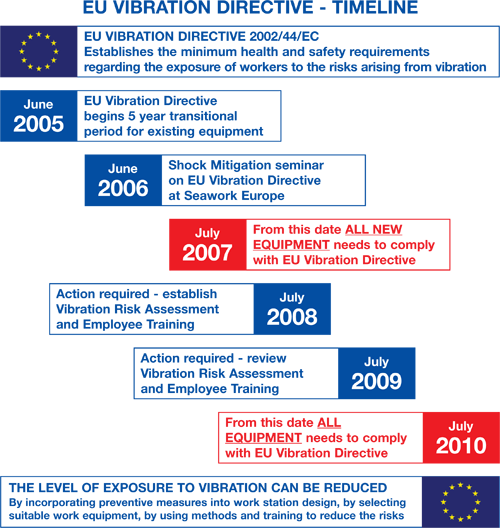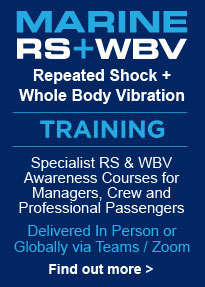To comply with legislation, and to avoid litigation, all maritime workplaces require a Duty Of Care culture supported by relevant Risk Assessment and Safety Planning. Changes to EU working practices tend to be driven by legislation, while changes in the US are frequently driven by litigation. Risk management is essential for both.
International Maritime Sector & SOLAS
The international maritime sector has developed effective regulations and practical design standards to prevent and reduce the loss of life at sea. SOLAS life saving standards have been implemented and there is now more focus on reducing injury at sea, which includes crew and passengers on RIBs and High Speed Craft.
EC Vibration Directive - EU Vibration Directive
The EC Vibration Directive or EU Vibration Directive (2002/44/EC) was established to protect users of sea, air and land vehicles from the effects of vibration and shock. The directive sets out regulations for the control of health and safety risks from the exposure of workers to Hand Arm Vibration (HAV) and Whole Body Vibration (WBV).
Whole Body Vibration & Repetitive Shock at sea
Whole Body Vibration (WBV) on RIBs and High Speed Craft (HSC) is usually caused by continuous ‘hammering’ from short steep seas or wind against tide conditions. Repetitve Shock (RS) on RIBs and HSC is usually caused by random ‘hits’ from head sea impacts or overtaking following seas.
For further information about
RS & WBV Marine Awareness Courses:
Claire Donnelly +44 (0)7709 675258
Email claire@shockmitigation.com












